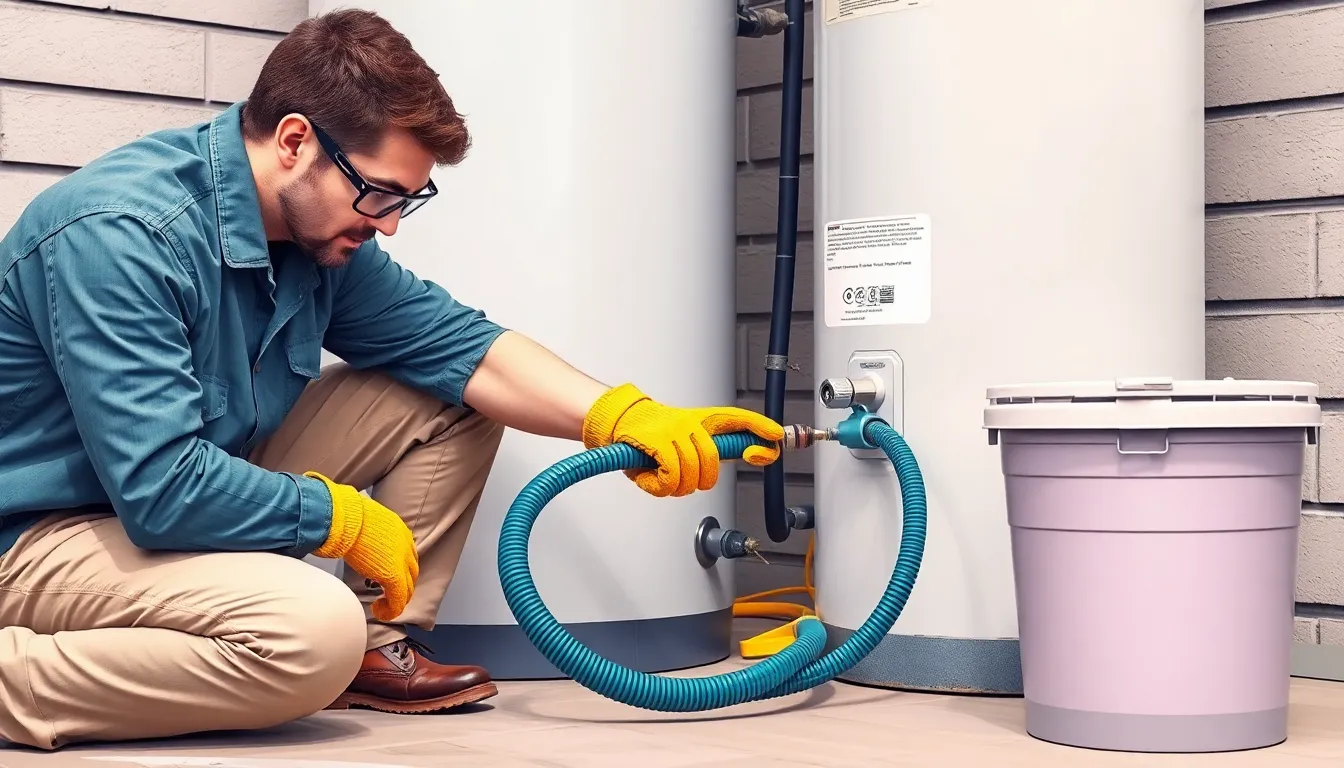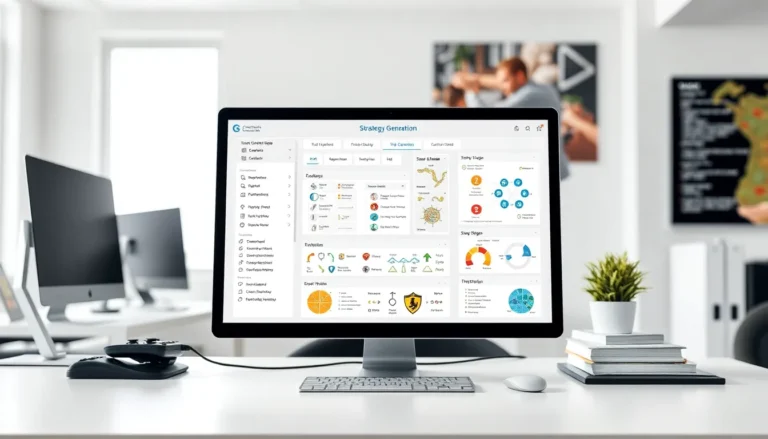Every homeowner knows that a water heater is a trusty sidekick, quietly working behind the scenes to deliver hot showers and warm dishes. But what happens when that trusty sidekick gets a little too full of sediment and starts acting like a grumpy old man? It’s time for a little TLC in the form of draining. Yes, folks, it’s not just a chore—it’s a mini-adventure in home maintenance!
Table of Contents
ToggleOverview of Draining Water Heater
Draining a water heater enhances its efficiency and extends its lifespan. Regular maintenance prevents costly repairs and ensures hot water stays available for daily needs.
Importance of Regular Maintenance
Regular maintenance of a water heater prevents sediment buildup, which can lead to inefficient heating. Sediment in the tank causes overheating and reduces lifespan. Cleaning the tank annually allows it to operate at optimal efficiency. Homeowners benefit from lower energy bills and consistently available hot water. Keeping the heater maintained minimizes the risk of more severe damage, saving costs on repairs and replacements.
Signs That Your Water Heater Needs Draining
Several indicators suggest a water heater needs draining. Unusual noises like rumbling or popping indicate trapped air from sediment buildup. Additionally, cloudy or discolored water signals potential contamination, requiring immediate attention. Inconsistent water temperature suggests inefficiency, prompting a need for maintenance. Lastly, leaks around the tank may show signs of corrosion, necessitating a thorough check and possible draining.
Step-by-Step Guide to Draining Water Heater

Draining a water heater involves specific steps to ensure efficiency and safety. Follow this guide to properly drain and maintain your unit.
Tools and Materials Required
- A garden hose is necessary for directing water away from the heater.
- A bucket collects any remaining water during the process.
- A flathead screwdriver may be needed to open the drain valve.
- Towels absorb any spills around the water heater.
- A pair of gloves protects hands from hot surfaces and water.
- Safety goggles shield eyes from splashes.
Safety Precautions
Ensure proper precautions are taken before starting. First, turn off the power supply to an electric water heater or set the gas valve to the pilot position. Next, locate the cold water supply valve and shut it off. This prevents water from entering the tank during drainage. Always allow the water to cool down for at least an hour before beginning. Connecting a garden hose ensures safe drainage outdoors or into a bucket. Finally, keeping children and pets away from the work area reduces the risk of accidents.
Common Issues When Draining Water Heater
Draining a water heater poses challenges that homeowners should address promptly. Two common issues include sediment buildup and leaks, both of which can affect performance and safety.
Sediment Buildup
Sediment accumulation in the tank leads to decreased heating efficiency. Over time, minerals from water create deposits that settle at the bottom. These deposits can cause unusual noises during heating cycles. Straining the heating elements increases energy costs and may lead to premature wear. Regular draining minimizes buildup and enhances overall function. Homeowners often find that performing this maintenance task helps sustain the water heater’s efficiency.
Leaks and Water Damage
Leaks around the water heater can result in significant damage if left unchecked. Factors like aging components or loose connections contribute to these leaks. Detecting water pooling near the base signals an immediate need for action. Addressing leaks quickly reduces the risk of structural damage to the surrounding area. Homeowners should inspect hoses, valves, and connections regularly to identify potential leak sources. Taking preventive measures protects the home from costly repairs associated with extensive water damage.
Alternatives to Draining Water Heater
Draining a water heater isn’t the only option available for maintaining optimal performance. Homeowners might explore several alternatives to address sediment buildup and associated issues effectively.
Professional Services
Hiring a plumber can provide a thorough and efficient solution. Professionals possess the expertise to inspect and maintain a water heater effectively. They utilize specialized equipment and techniques that can remove sediment and other debris without the need for a complete drainage. Opting for professional services can also enhance safety and ensure compliance with local regulations. Additionally, routine professional inspections can catch potential problems early, preventing extensive repairs down the road.
When to Consider Replacement
Sometimes, replacing the water heater might be the most practical solution. If the unit shows signs of significant corrosion or persistent issues despite regular maintenance, a replacement becomes necessary. Homeowners should consider replacement when the water heater exceeds its expected lifespan, which typically ranges from 8 to 12 years. Upgrading to a more energy-efficient model can significantly reduce energy bills and improve hot water availability. Evaluating the costs associated with frequent repairs compared to the investment in a new unit can guide this decision effectively.
Maintaining a water heater is crucial for ensuring efficient hot water supply and prolonging its lifespan. Regularly draining the unit prevents sediment buildup that can lead to performance issues and costly repairs. Homeowners should remain vigilant for signs that indicate a need for maintenance, such as unusual noises or discolored water.
Taking proactive steps not only enhances the water heater’s efficiency but also contributes to lower energy bills. Whether opting for DIY methods or seeking professional assistance, prioritizing maintenance will ensure a reliable source of hot water for years to come.



